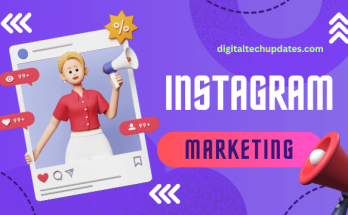For years SEO conversations have revolved around keyword usage, but today we are starting to see the decline of the keyword craze and the growth of consumer-influenced content.
Google’s focus is narrowing on the user experience. This means that the search engine is now more concerned with how users interact with the search tool and what they do after the search than with how the words in their queries match the words used in the search. site pages.
One way this change becomes apparent is with the recent change to meta description ability. Google used to limit meta descriptions (the short descriptions posted in search results after the page title and link display) to about 140 words. By expanding the capacity of these descriptions, Google recognizes that sometimes its users simply want answers on the results page rather than having to click to read more.
Voice Search is speaking out loud (and being heard!)
One of the main contributing factors to the end of keyword-driven SEO is voice search. Voice search and voice command tools on Google,Siri-enabled mobile phones, and home devices like Alexa are changing the landscape of online search.
These tools are now learning more about the context in which users build queries. As a result, it’s important to update your online marketing using relevant content that your potential buyers can understand and relate to in order to win their hearts and do business.
What can your business do?
Understand your buyers.
Consumers are savvy;think about the last time you made a purchase decision. You probably did your research online before going to the store or talking to a salesperson. You want to ensure that your business website helps buyers make a decision long before your sales team calls or meets with them. The first step is to understand your buyers.
Interview your sales team.
As a business owner or seller, you may have an idea of who your ideal buyer is, but the best place to start is with the sales team that represents your business. Starting here will help you understand two things: who you want to work with and who brings the most money to your business.
If you optimize your website and all your online content for these specific buyers, you will find that your business will attract more people you want to work with, which will generate more qualified contacts for your sales team, an increase in sales. funnel, and more sales for your business!
Click here for a worksheet on how to identify your buyer persona and better understand your buyer.
Determine how your ideal buyers search for you online.
1. Use your Google Analytics website tracking to obtain historical data.
Getting information from your website’s existing historical data is the best way to identify trends in how people have been searching for you so far. Two things are important to keep in mind when using historical analytics data: a long-term picture of activity, and recent trends in activity.
The long-term picture can be found by adjusting your Google Analytics timeline to 12 months or more to get a good idea of how consumers found you. You can see how they found your website by viewing your channel’s report at acquisition time.
The short-term picture you should take a closer look at the last 3 and / or 6 months of website activity. Record the data during these shorter time frames and compare it with what happened in the last 12 months. This will allow you to see, for example, if organic search traffic has increased or if your visitors are using their mobile devices more now than before. Use this information to understand your buyers as individuals.
2. Use keyword reports to understand your buyers’ challenges.
Keyword research and optimization should remain an exercise in understanding your buyer, but it cannot be the whole image. SEOs are now learning that having a standalone keyword strategy is less and less effective because keywords don’t have the power they once had. To be successful, you must build your website primarily around your buyers’ challenges and topics of interest.
This does not mean that you should ignore your historical data that is based on keywords! To develop relevant topics, there are three great ways to understand your buyers’ historical challenges:
Historical keyword data
Keyword volume data
Related Searches
Historical keyword data
Historical keyword data research for your website can be found in Google Analytics in the same channels report that you used in step one above. In the channels report, select your time frame, which should be quite long for this purpose, and then select organic traffic, which is the traffic that comes to your site from unpaid search results on sites like Google, Yahoo, and Bing. . This data will show you some of the information your buyer entered in the search when they found your website.
Keyword volume data
Keyword volume data can be found with tools like Moz, SEMRush or SpyFu and will allow you to see the monthly search volume for important keywords. Monthly search volume is the number of times a specific word is used in a search, either in voice search or in written query.
Related search
Related search research is a little more about the app and less about the data. You’ll want to open a private browser window to Google without being followed. In the Chrome browser, the private window is called “Incognito” and in a Firefox browser, the private window is simply called “Private.” In this window, Google does not recognize you or the trends of the things you normally look for, which will allow your search to be pure, as it would be for your consumer who does not know you.
Next, use some of the words, topics, and questions you’ve collected in your research, and look them up in Google results. Scroll to the bottom of the results and review the “related searches” section. This section will help you understand if the words or questions you are using as themes for your ideal buyer are relevant to what your buyer is really looking for.
If you see many related searches that match what you are trying to share, you are on the right track. If not, you may need to adjust your approach and see if you can try to get on the same page with your buyer.
Apply your research!
Now that you’ve learned about your buyer, their challenges, and how they’re researching, build your website around your buyers’ concerns! The first place to start is to analyze your home page. Make sure that when the buyer lands on your homepage, you answer the questions that you now know they have. Next, start writing blog articles to specifically answer frequently asked questions that you discovered on your sales visit and related search exercise. From there, you’ll want to start looking at the other pages on your site and continue your optimization process for your buyers!
Great SEO starts with a great website. If you are interested in how your website compares to your competition, schedule a call with Ca Design Studio.




